Cases
Osteoarthritis
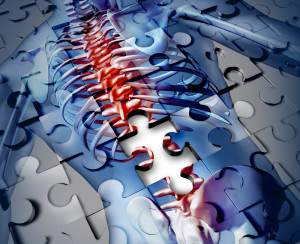 Degeneration of the spine is a prevalent problem that generally advances with age, though is not always restricted to the elderly1.
Degeneration of the spine is a prevalent problem that generally advances with age, though is not always restricted to the elderly1.
The presence of osteoarthritis is not always consistent with pain either. While progressive joint failure may cause pain and disability, approximately 50% of people with osteoarthritic changes don’t have any symptoms2. This is known as the “structure-symptom discord”.
How the spine degenerates and how pain is experienced is multifactorial. Firstly, osteoarthritis begins when there is an imbalance of mechanical load that exceeds the limit of what joint tissues can handle. Bony changes and inflammation cause dysfunction and instability of the joints. Secondly, changes to the nervous system occur around the spine, then spinal cord, and finally brain. How people move starts to change; muscle strength changes; and finally sensory awareness of their body changes. When these systems break down, the person experiences persistent pain (Fig. 1).
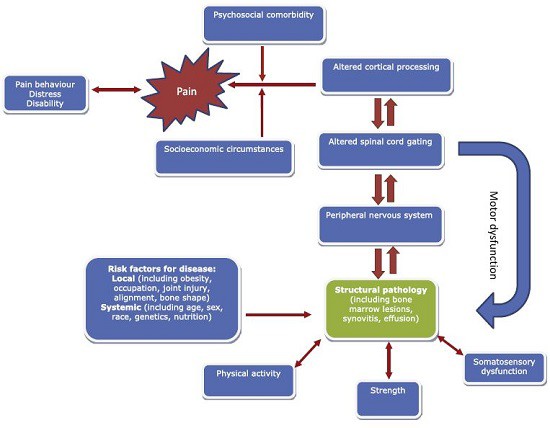
Figure 1. Biospsychosocial model depicting the relation of structural pathology to the experience of pain
How such dramatic alterations in shape of the spine occur over time (Fig. 2) is primarily due to a decrease in nutrition to the discs between the vertebrae3. The primary source of nutrition for the intervertebral discs are the end plates of the vertebrae. As degeneration progresses, fissures, cracks, clefts and fractures occur in the end plates, resulting in them thinning and water volume being lost from within the disc. This reduces disc height, misaligning mechanical forces and changing the shape of the spine (Fig. 3). As a consequence, more stress and strain is placed on the joints of the spine creating back pain. Long term pain can lead to more permanent, dysfunctional changes in the central nervous system ?
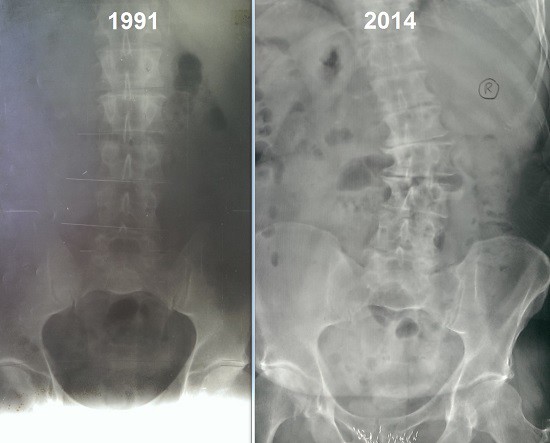
Figure 2. Spinewave case example of degeneration of the lumbar spine over 23 years resulting in scoliosis to the right and persistent low back pain
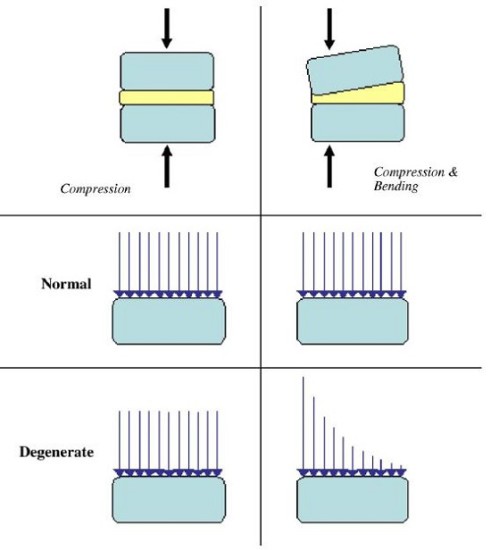
Figure 3. Qualitative stress distribution across vertebral end plate for normal and degenerated intervertebral disc under pure compressive and eccentric compressive loading
Cervical Dystonia
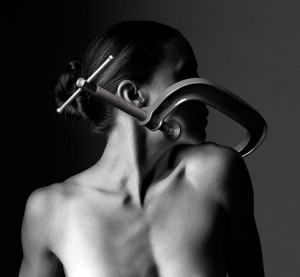 I think my case is unique insofar that my condition is almost cured against all odds of Western medicine – KA
I think my case is unique insofar that my condition is almost cured against all odds of Western medicine – KA
Dystonia disrupts the nervous system’s ability to allow the brain and muscles to communicate. How the body controls muscle movement is very complicated and involves many areas of the brain.
The areas of the brain believed to be most affected by dystonia are called the basal ganglia.
The basal ganglia check the speed of movement and control unwanted movements. They are responsible for sending signals to muscles, instructing them when to move, and when to stop moving. For reasons not yet fully understand, in dystonia, the basal ganglia’s instructions to muscles become irregular and chaotic, resulting in unwanted muscle movements and contractions (see video example) ?
Non-Coeliac Gluten Sensitivity
He even went through periods where he could not walk properly – CK
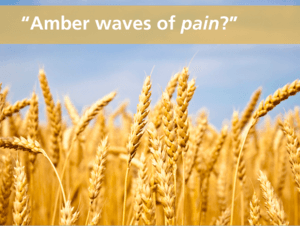 I’ve been told personally that a little gluten never hurt anyone. Clinical experience proves otherwise. The combination of misunderstanding, ignorance and rise in everything pervasively gluten-free has made the topic seem like a modern day fad. Unfortunately, this phenomenon affects those most for whom gluten sensitivity is a real, clinical issue.
I’ve been told personally that a little gluten never hurt anyone. Clinical experience proves otherwise. The combination of misunderstanding, ignorance and rise in everything pervasively gluten-free has made the topic seem like a modern day fad. Unfortunately, this phenomenon affects those most for whom gluten sensitivity is a real, clinical issue.
It is now becoming clear that, besides those with coeliac disease or wheat allergy, there are people with gluten sensitivity in whom neither allergic nor autoimmune mechanisms can be identified1. It has been estimated that for every person with coeliac disease there should be at least 6 or 7 people with non-coeliac gluten sensitivity (NCGS)1. In 2011 in London, a panel of 15 experts announced a new classification of gluten-related disorders (see yellow boxes below) that was then published in February 20122. The Second Expert Meeting on gluten sensitivity that was held in Munich in 2012, decided to change the name of gluten sensitivity to non-coeliac gluten sensitivity in order to avoid confusion with coeliac disease3.
The challenge with diagnosing NCGS is that currently there are no laboratory biomarkers specific for gluten sensitivity and the diagnosis is based mainly on exclusion criteria: elimination of gluten-containing foods from the diet and monitoring symptoms. Occasionally people will say they have attempted a gluten-free diet, yet symptoms persist. The problem with this is, firstly, foodstuffs nowadays are a complex minefield of chemicals and people may exhibit cross-reactivity with other wheat-based molecules and, secondly, the person may not have been strict enough with the diet or persisted long enough to heal the gut. Being completely gluten-free is incredibly challenging and often too difficult, so alternative diagnoses to gluten sensitivity are sought and the underlying issue is missed.
Many people that are intolerant of gluten are also intolerant of other proteins found in foods like dairy, eggs, and even coffee and milk protein. Critics of the gluten-free diet argue that people with irritable bowel syndrome (IBS) are not sensitive to gluten, but instead are reacting to a group of poorly absorbed carbohydrates called FODMAPs4 (figure below). From a practical perspective, wheat and many other gluten-containing grains are FODMAPs and should be avoided by people with gluten sensitivity anyway.
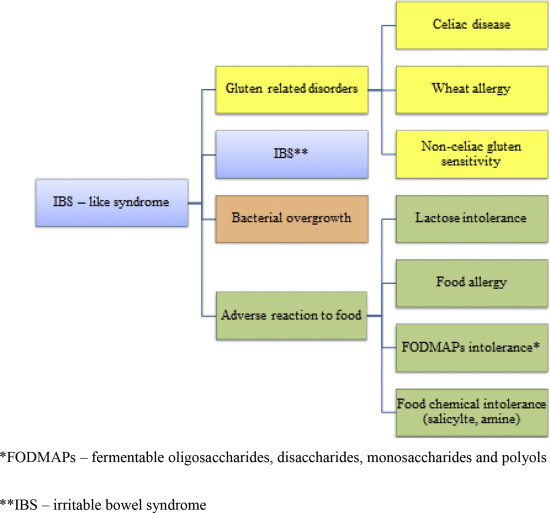
Coeliac disease is easier to diagnose than NCGS. Most doctors today know how to screen for coeliac disease. They will typically test for antibodies to alpha gliadin, transglutaminase-2, deamidated gliadin, and endomysium, and if positive do a biopsy to determine if tissue damage is present. However, we now know that people can (and do) react to several other components of wheat above and beyond alpha gliadin, the component that is implicated in coeliac disease. These include other epitopes of gliadin (beta, gamma, omega), glutenin, wheat germ agglutinin (WGA), gluteomorphin, and deamidated gliadin5,6.
The bottom line is standard blood tests by general practitioners are not comprehensive enough. The person may be reacting to deamidated gliadin, glutenin, gluteomorphin, and either transglutaminase-3 or -6, but not reacting to alpha gliadin or transglutaminase-2 (the antibodies used to screen for coeliac disease by most doctors). They will remain undiagnosed and continue to eat gluten for the rest of their lives, suffering symptoms and putting themselves at serious risk for autoimmune diseases.
The typical presentation of NCGS is a combination of IBS and systemic manifestations like headache, joint and muscle pain, muscle contractions, leg or arm numbness, chronic fatigue, “brain fog”, body mass loss and anaemia. Symptoms can also include behavioural disturbances such as changes in attention or depression2 (Table of NCGS symptoms).
IBS can include abdominal pain, nausea, bloating, flatulence, diarrhoea or constipation. People with IBS who respond well to a gluten-free diet can suffer from one of the three diseases: coeliac disease, wheat allergy or NCGS, where NCGS is the most likely option (figure above). In children, NCGS manifests with intestinal symptoms – abdominal pain and chronic diarrhoea – but also symptoms beyond the gut.
Extragastrointestinal manifestations seem to be less frequent but the most common is chronic tiredness. When a person with NCGS consumes wheat or other gluten-containing foods, he or she may not always experience the classic digestive symptoms associated with gut because they do not produce antibodies to transglutaminase-2 (which is mostly expressed in the gut). Instead, the intolerance of wheat may manifest in skin conditions like eczema or psoriasis; and in neurological or brain-related conditions like depression, peripheral neuropathy (pain, numbness, burning, tingling), ataxia (difficulty walking) or ADHD7. Current evidence suggests that neurological manifestations are immune-mediated and that there is cross-reactivity between immune cells, nerve cells and gluten proteins.
Gluten sensitivity is a common disorder that manifests in diverse ways, making it a difficult condition to diagnose. Many people who present with neurological manifestations of gluten sensitivity have no gastrointestinal symptoms7 ?
Primary Hypertension


The following is a case study of reduction in primary hypertension in a 35-year old male following upper cervical chiropractic care with no other influencing factors.
A study in the Journal of Human Hypertension examined the effects of an atlas adjustment on blood pressure. Results showed that restoration of atlas alignment was associated with marked and sustained reductions in blood pressure, similar to the use of two-drug combination therapy1.
It was postulated that alterations in atlas anatomy can generate changes in the vertebral circulation that may be associated with high blood pressure.
Unlike other vertebrae, which interlock one to the next, the atlas relies solely upon soft tissue (muscles and ligaments) to maintain alignment. The atlas is therefore uniquely vulnerable to displacement. Displacement of C1 is pain free and thus remains undiagnosed and untreated (below) whereas other health-related consequences can be attributed to specific causes1.
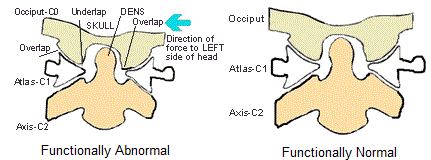
Secondary hypertension has an identifiable cause, such as renovascular disease, whereas primary hypertension has no known cause. Primary hypertension accounts for 95% of all cases of high blood pressure2 and in recent years research has suggested that changes in endothelial (blood vessel wall) function may cause an increase in blood vessel tone due to oxidative stress, insulin resistance, inflammation, and poor nervous system function resulting in increased levels of angiotensin II (below).
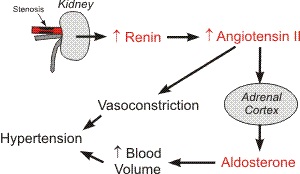
All patients with high blood pressure should be questioned about a history of trauma, especially whiplash from a motor vehicle accident, contact sports injury, or serious falls. People often forget these accidents, thinking that they were not hurt because they did not break any bones and were not bleeding.
Minor misalignment of the atlas vertebra can potentially injure and/or compromise brainstem neural pathways resulting in changes in blood pressure1 ?
A 35-year old male presented with an average blood pressure of 142mmHg from May to October 2014. Upper cervical chiropractic care commenced on October 10, 2014. Following consistent chiropractic care over a 3-month period, the patient’s blood pressure reduced to an average of 126mmHg from October to December 2014 (see graph below).
This result is consistent with the results of the study mentioned above. No other medical treatment or intervention was utilised at any time. All blood pressure recordings were taken daily by the patient electronically.
Hypertension can be a multifactorial problem and any treatment provided should always be done so in the context of the patient’s presenting health problems and lifestyle issues. In this case study, upper cervical chiropractic care alone was able to alter neurovascular tone sufficiently to lower the patient’s blood pressure. Results have been maintained through to 2015.
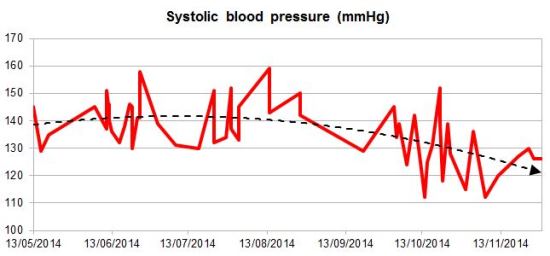
© 2015 Spinewave
Further reading:
- New blood pressure guidelines 2014
- High blood pressure special chiropractic report
- High blood pressure damages the brain
References:
- Bakris, G, et al. Atlas vertebra realignment and achievement of arterial pressure goal in hypertensive patients: a pilot study. Journal of Human Hypertension. 2007. 21(5): 347-52.
- Carretero, OA, et al. Essential hypertension. Circulation. 2000. 101: 329-335.
Nausea, bloating and constipation
Nausea, bloating and constipation are common and often non-specific symptoms.
Patients can present with one or all three symptoms and not even realise they are constipated. Surprisingly, 50 percent of people who complain of nausea, bloating or constipation have normal bowel movements1.
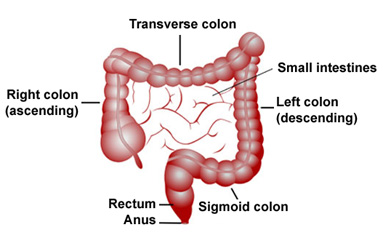
In health, the right colon usually functions as a reservoir, mixing contents, while the left colon functions as a conduit. In constipated people, measurement of colonic transit may reveal segmental (right-sided, left-sided or rectosigmoid) delays in colonic movement2.
The term “slow transit constipation” refers to a clinical syndrome attributable to ineffective colonic propulsion3. Sometimes patients complain of constipation but there is no underlying systemic disorder or pelvic floor dysfunction that explains the symptoms. There will be no pathological finding on imaging either. The person may complain of other symptoms such as nausea, bloating, painful or irregular periods, urinary hesitancy, cold hands or fainting. These are called “extragastrointestinal” symptoms.
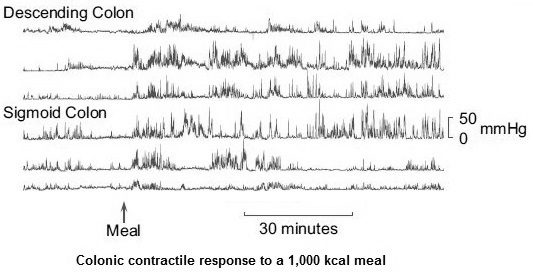
Potential causes of this subtle problem can be wide and varied, such as medications, pain killers, allergies to certain foods, candida, stress, anxiety or dysfunction of the autonomic nervous system. However, the underlying mechanism of slow transit constipation is reduced colonic contractile activity, which needs to be kick started again. This is called “colonic inertia”. The image above shows normal colonic contractions following a 1,000 kcal meal.
Symptoms such as abdominal bloating, discomfort and nausea are attributed to delayed colonic transit with “back up” of contents and perhaps bowel distention3 ?
Autism Spectrum Disorder
The published case
 A 7-year-old male diagnosed at 14-months of age with Autism Spectrum Disorder (ASD) presented for chiropractic care. History examination revealed the patient had daily chronic diarrhoea and nocturnal enuresis (bedwetting). Despite being verbally reluctant and having limited receptive language, the patient maintained good eye contact with a noticeable exotropia of the right eye. He also had various self-stimulatory behaviours such as hand flapping, which turned into temper tantrums.
A 7-year-old male diagnosed at 14-months of age with Autism Spectrum Disorder (ASD) presented for chiropractic care. History examination revealed the patient had daily chronic diarrhoea and nocturnal enuresis (bedwetting). Despite being verbally reluctant and having limited receptive language, the patient maintained good eye contact with a noticeable exotropia of the right eye. He also had various self-stimulatory behaviours such as hand flapping, which turned into temper tantrums.
At age two he began applied behavioral analysis treatment (ABA) for his toe walking. After three years of this therapy little improvement had occurred. He appeared to be unaware of his environment and the emotions of people around him, and did not tolerate other children in his physical space.
The patient also displayed fixative behaviours associated with Obsessive Compulsive Disorder, watching the same movie multiple times and sleeve chewing. He was allergic to pollen, dust mites, horses, cats and dogs. He also suffered from asthma, which was managed by daily medications, namely Ventolin®, Severent® and Becotide®.
The patient’s response to chiropractic care was monitored by his parents, in addition to clinical observations made during his visits to the chiropractor. Within 6 visits, spanning a period of 4 weeks, the patient’s right eyed exotropia had normalized, his nocturnal enuresis had reduced from 6 nights a week to 2 nights per week and he had consistent and regular bowel movements at 8AM every morning.
Within 2 months of beginning chiropractic care the patient went to the toilet by himself for the first time; his sleeve chewing and toe walking had also resolved. His parents noted several other positive behaviours including more awareness and reduced incidents of temper tantrums.
Reference:
 Alcantra, J., et al. Improvement in a pediatric patient with autistic spectrum disorder (ASD) following a trial of chiropractic care: a case report. Journal of Clinical Chiropractic Pediatrics. 2014 Vol 14(3): 1183-1186.
Alcantra, J., et al. Improvement in a pediatric patient with autistic spectrum disorder (ASD) following a trial of chiropractic care: a case report. Journal of Clinical Chiropractic Pediatrics. 2014 Vol 14(3): 1183-1186.
The original story
James was diagnosed with severe autism at 14 months, he is now seven. James is non-verbal, though he does have receptive language skills. He is not yet toileting himself consistently. He toe walks and constantly chews his sleeves. He has good eye contact, though his right eye roams. He flaps and has various other self-stimulatory behaviours and as well as a lot of diarrhoea. He has temper tantrums when his needs are not being met.
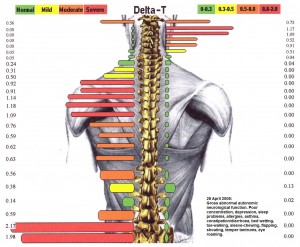
Poor concentration
Depression
Sleep problems
Allergies
Asthma
Constipation/diarrhoea
Bedwetting
Toe walking
Sleeve chewing
Flapping/shouting
Temper tantrums
Eye roaming (exotropia)
James started with applied behaviour analysis treatment at age two and continued with this for four to five years with only small positive results. He has had dietary interventions; gluten/casein free and supplements with no positive results.
James started chiropractic care and had positive results.
Very quickly, his right eye stopped roaming, his diarrhoea decreased, and his temper tantrums decreased. After 1 to 2 months of care his sleeve chewing and toe walking had almost completely stopped. He has also had other several positive new behaviours including improvements and more awareness of toileting.
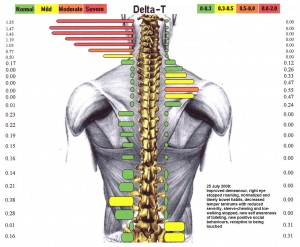
Improved demeanour
Reduced eye roaming (exotropia)
Normalised bowel habits
Fewer temper tantrums
Tantrums less severe
Reduced sleeve chewing
Reduced toe walking
Self awareness when toileting
New positive social behaviours
Receptive to touch
Reduced bedwetting
Improved asthma symptoms
Raynaud’s Syndrome
 Improper functioning of the nervous system can affect blood vessels, most frequently those of the fingers and toes, causing the blood vessels to constrict when a person is cold or experiencing stress. This results in less blood flowing to the extremities, which then turn white or blue. It can often be painful when blood flow returns to the affected digits.
Improper functioning of the nervous system can affect blood vessels, most frequently those of the fingers and toes, causing the blood vessels to constrict when a person is cold or experiencing stress. This results in less blood flowing to the extremities, which then turn white or blue. It can often be painful when blood flow returns to the affected digits.
Raynaud’s Syndrome is a condition of recurring episodes of angiospasm of peripheral arteries, predominantly the arterioles. This angiospastic disorder presents clinically in a symmetrical pattern affecting the upper extremities and is commonly seen in females ?
Concussion

Why concussions require the right treatment, right away.
This article is based on the latest research from 2014.
A concussion, or mild traumatic brain injury, follows any force to the head resulting in changes to brain and cognitive function.
The force can be of varying degrees and affect each person or child very differently. While concussions share common characteristics – such as headache, dizziness, fogginess, confusion, fatigue, poor sleep, irritability, sensitivity to light or sound – each concussion is unique. There are many factors that contribute to symptoms and recovery based on each individual’s neurological make up, academic load, extra-curricular activities, and history of trauma to the head and neck; whether it be one new blow to the head or lots of minor falls.
If you are a parent, you know your child better than anyone. You will be the first one to notice symptoms after a hit to the head in the first 24 to 48 hours and it is important to get the right treatment as soon as possible.
Obvious major symptoms within the first 48 hours are disorientation and confusion immediately after the event; impaired balance within 1 day of the injury; slower reaction time within 2 days of the injury; and impaired verbal and learning memory within 2 days of the injury1.
These major symptoms can sometimes recover quickly but individuals are frequently left with other lesser symptoms: dizziness, brain fog, vision problems, difficulty reading, poor concentration, headaches or even eye pain.
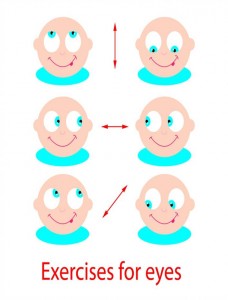 The lesser symptoms are often missed because most “side-line” or medical testing only assesses one aspect of function, balance; and balance is not the whole picture.
The lesser symptoms are often missed because most “side-line” or medical testing only assesses one aspect of function, balance; and balance is not the whole picture.
The vestibular (balance) system is a complex network that includes small sensory organs of the inner ear and connections to the brainstem, cerebellum, cerebral cortex, ocular system and postural muscles of the spine.
There are two parts to the vestibular system: the vestibulo-ocular system and the vestibulospinal system.
The vestibulo-ocular system maintains visual stability during head movements, whereas the vestibulospinal system is responsible for postural control and balance. The vestibulospinal system often recovers within 3 to 5 days of injury but the person is still left with symptoms related to the vestibulo-ocular system2.
Ocular motor impairments may manifest as blurred vision, double vision, impaired eye movements, difficulty reading, dizziness, headaches, ocular pain or poor visual-based concentration.
Current medical testing and treatment does not account for ocular motor impairments.
There are 5 different types of concussion:
- Vestibulospinal (balance).
- Vestibulo-ocular (ocular motor impairments).
- Mood and anxiety.
- Headaches or migraine headaches.
- Upper cervical or neck problems.
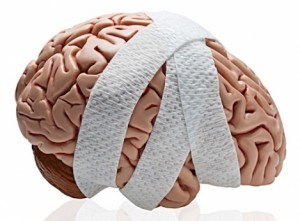
Chiropractic neurologists are trained to assess each type of concussion and provide the most appropriate treatment.
The kind and degree of symptoms dictate the length of recovery. Concussed individuals often get medical clearance even though the lesser symptoms persist. This is because many people don’t understand the link between concussion and trauma to the upper neck, brain and vestibular system.
As with injuries to other parts of the body, concussions can leave scars on the brain3. Getting the right treatment, right away, can greatly improve recovery time4 ?
Cushing’s Disease
 This case is the hallmark of having a progressive, working diagnosis and not getting stuck on one idea.
This case is the hallmark of having a progressive, working diagnosis and not getting stuck on one idea.
Disease processes can progress rapidly and any hunch or potential red flag should warrant reexamination, a second opinion, blood tests, or new imaging such as X ray or MRI.
The patient presented with years of chronic right sacroiliac pain, numbness and tingling down the back of the leg, and difficulty lifting things. My concern at the time she presented for care was the recent onset of urge incontinence in the last year, which up until this time was only being treated by injection.
The underlying cause was more sinister – as was the cause under that cause.
Sometimes the symptoms of chronic back pain and changes in bowel and bladder function can be tied together by cauda equina syndrome, which is extreme pressure on the nerves of the lower spinal cord. If cauda equina syndrome is not dealt with appropriately, sometimes immediately by surgery, there can be permanent damage to the nerves that control the legs, bowel and bladder.
Other concerns the patient had were inability to lose weight, thinning hair, thinning skin that frequently got damaged and didn’t heal quickly, a change in facial colour and osteoporosis.
Initially, the patient gave me X rays from 2003 that were relatively normal (left). So the working diagnosis for the loss of bladder control was neurological at first. Whilst on holiday, she had a fall and the pain became progressively worse. I ordered a new set of films, shocked to find a double spondylolisthesis (right). A spondylolisthesis is the forward slipping of one vertebra on top of another. This process had occurred significantly over a 10-year period and was beginning to affect the function of the spinal nerves that controlled the patient’s bladder. It also accounted for the tremendous pain she was experiencing in her back and sacroiliac joint (hip).
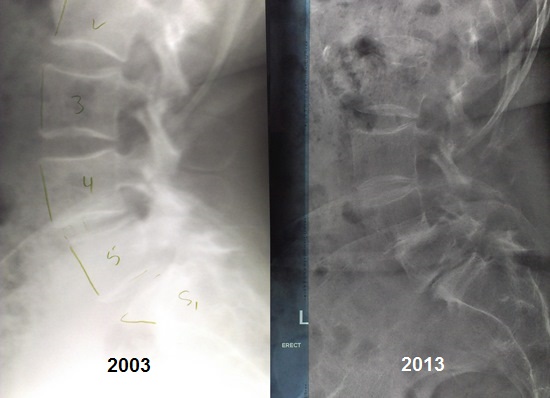
I referred the patient to an orthopaedic surgeon for further investigation and an MRI. The first surgeon she saw suggested that this problem had probably been with her since childhood. The above X rays proved otherwise, so I suggested she seek another opinion.
Further testing revealed high levels of cortisol, which marked the beginning of the chief diagnosis and real underlying cause of all her health problems: a tumour on the pituitary gland, resulting in Cushing’s disease.
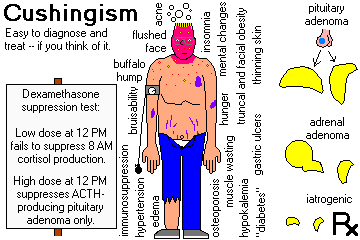 A pituitary tumour tells the adrenal gland to pump out more and more cortisol, which is the same stuff stress is made of. Cushing’s disease (as opposed to Cushing’s syndrome) is difficult to differentiate from people under major stress or those taking lots of asthma medication because they may exhibit the same bodily signs.
A pituitary tumour tells the adrenal gland to pump out more and more cortisol, which is the same stuff stress is made of. Cushing’s disease (as opposed to Cushing’s syndrome) is difficult to differentiate from people under major stress or those taking lots of asthma medication because they may exhibit the same bodily signs.
However, when cortisol levels become high enough, certain signs and symptoms become significant: Bruises, long term abdominal obesity, fullness of the face, facial hair and acne, purplish linear markings on the lower abdomen and gluteal region, weakness and fatigue, limb weakness, thin skin, loss of memory and bone degeneration.
Long term stress and cortisol has detrimental affects on overall health for 4 reasons.
Physical, emotional and chemical stress, as well states of constant pain, tell the adrenals to produce more cortisol. Over time excess cortisol does 4 things:
- Stress depresses cartilage and bone formation, leading to osteopenia and osteoporosis.
- Stress inhibits inflammation, which is a bad thing because wounds don’t heal.
- Stress depresses the immune system, lending one to chronic illness.
- Stress causes changes in heart, nerve and gut function, leading to all sorts of issues.
After many working diagnoses and eventually finding the cause, the patient was referred for surgery to remove the pituitary tumour. We wish her a speedy recovery ?
Meniere’s Disease
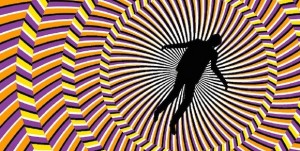 Meniere’s disease (or syndrome) is characterised by vertigo or dizziness, and some combination of four associated symptoms: nausea, inner ear pressure, low-frequency hearing loss and tinnitus.
Meniere’s disease (or syndrome) is characterised by vertigo or dizziness, and some combination of four associated symptoms: nausea, inner ear pressure, low-frequency hearing loss and tinnitus.
The cause of Meniere’s disease is unknown and the pathology is poorly understood. The attacks of vertigo appear suddenly, last from a few to 24 hours, and subside gradually. The attacks are associated with nausea and vomiting. The person may have a recurrent feeling of fullness in the affected ear and hearing in that ear tends to fluctuate, but worsens over the years. Tinnitus (ringing ears) may be constant or intermittent. Other symptoms often associated with Meniere’s syndrome are nystagmus, brain fog, headaches, depression, neck stiffness, sinus pain and fatigue.
Mechanical cause
Meniere’s disease can often take many years to manifest. All patients with a history of tinnitus, vertigo or dizziness should be questioned about a history of trauma, especially whiplash from a car accident, contact sports injury, or serious fall1. People often forget these accidents, thinking that they were not hurt because they did not break any bones and were not bleeding.
Dizziness related to perturbations in information received from joint receptors in the neck that feed into the vestibular system are not usually taken into consideration. Decreases in sensory information to the brainstem (medullary somatosensory nucleus) from a problematic upper cervical spine can lead to overactivation of the dorsal cochlear nucleus. This may result in an increase in perception of tinnitus.
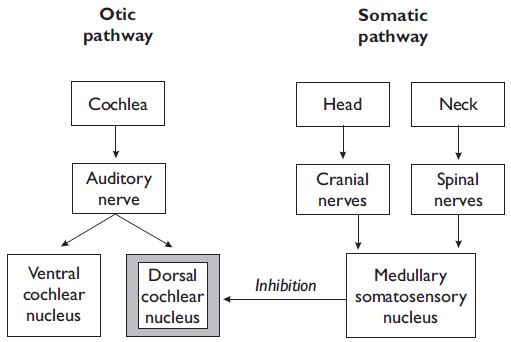
Non-mechanical cause
Any model of tinnitus or dizziness that looks at the cochlear (ear) in isolation is now considered inadequate2. It is not always necessary that tinnitus or dizziness be derived only from the ear. A neurological model now considers tinnitus and vertigo to be part of a much wider system issue, involving auditory perception in the brain, limbic emotional centres, and the autonomic nervous system (fight/flight stress). This is why prolonged periods of fear, anxiety, tension and stress can manifest with Menieres-like symptoms such as vertigo or tinnitus.
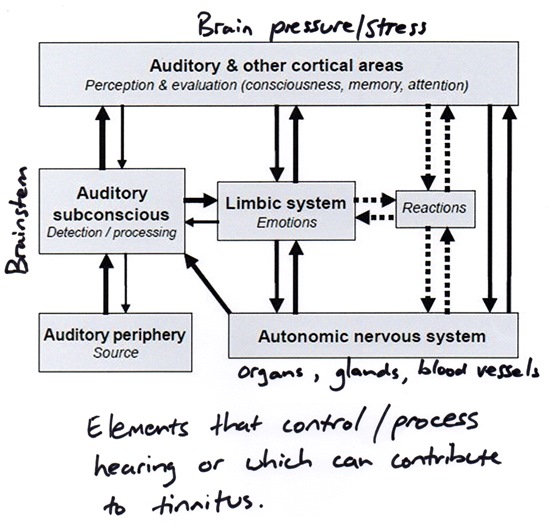
Concentration
 Success in any endeavour requires the ability to think clearly.
Success in any endeavour requires the ability to think clearly.
This is the reason the more extreme forms of math are taught in schools; math that we have no actual use for within our lifetime. However, what we learn from such calculations is simply how to walk through progressions of thought towards a logical (or seemingly illogical) conclusion.
Unfortunately, we live in a world where many people don’t think through progressions to any degree. Instead we might just flaunt our ill-gotten beliefs, reiterations of news readers, lecturers, or work mates beliefs, putting no consideration to where such beliefs or trains of thought lead us as they reach their logical (or seemingly illogical) conclusion. This is not thought, but a kamikaze approach to life.
Could it be possible that our physical health is hindering accurate thought?
As a musician and a writer I’m constantly digging into new theories and teachings, then piecing these thoughts together in order to create either a musical arrangement or a philosophical ideal. This requires many hours each day of studying very old books and often over 8 hours per day at the piano. The music industry has been extremely generous to me over the years. I’ve had the ability to do many things that most musicians only dream of, however the work is extremely taxing physically: not just the long hours practicing but also the demanding nature of performances or the 4AM finishes in the studio. There are many potential distractions to concentration on some stages and a lot of energy being spilled out into the crowds. Many times I’ve come off stage after giving every last drip of energy and emotion, quite literally wanting to collapse. So when it comes to energy, it’s very important I start with a full tank.

Sickness
 Resolution of life-long chronic illness in a 48-year old male following 1 year of chiropractic care.
Resolution of life-long chronic illness in a 48-year old male following 1 year of chiropractic care.
Patient presented with frequent illness, vertigo, nausea, dry left eye, atrial fibrillation, gravelly voice, wheezing, anxiety, stomach cramps and reflux for ±15 years.
He is now training for marathons.
There is nothing more rewarding than science applied to real life and miracles becoming expected clinical outcomes.
Neuroimmunology studies the interaction between the nervous system and the immune system. Traditionally, it has been thought that the immune system is only controlled by hormones and cell proteins called cytokines.
A new understanding is that the brain directly influences the immune system by sending messages down nerve cells.
Networks of nerve fibres connect to the thymus, spleen, lymph nodes and bone marrow. Experiments show that immunity can be altered by changes in brain function.

Signals from the brain, called neurotransmitters, communicate to dendritic cells to recruit the best T cell for a foreign invader. Neurotransmitters come from other sources too, like the gut, which is why gut problems compound illness. The brain can also influence the immune system through the hypothalamic-pituitary-adrenal (stress) axis, suppressing immunity. Disruption of these complex interactions between the nervous system and immune system, altering release of neurotransmitters, contributes to inflammation and sickness1. read more…

